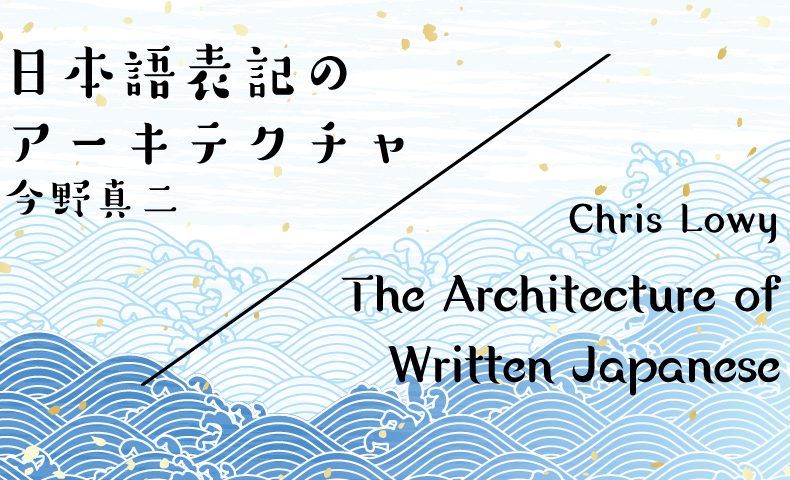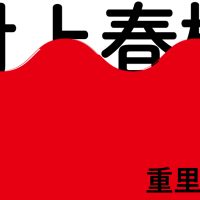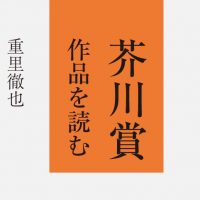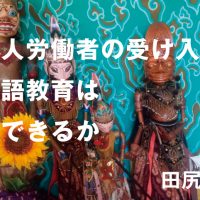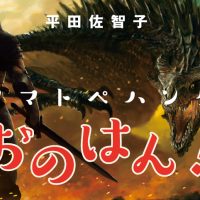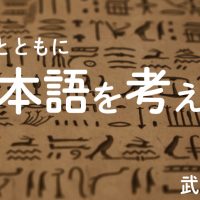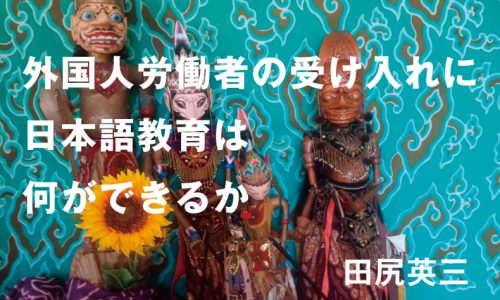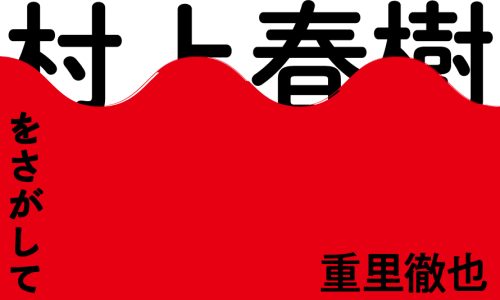今野真二
[Part1]
生物としてのヒトがどのようにして言語を獲得したかはわからないけれども、言語を獲得した「瞬間」を想定するならば、その「瞬間」に文字がなかったことは確かなことといえるだろう。つまり「言語が文字をもっていない瞬間がある」「文字をもたない言語がある」ということは確かなこととみてよいことになる。川田順造『無文字社会の歴史 西アフリカ・モシ族の事例を中心に』(2001年、岩波現代文庫[1976])はモシ族の調査に基づいて、無文字社会について分析している。
日本列島上で、日本語につながるような言語がいつ頃使われ始めたかについても、結局はわからないとしかいいようがないが、その時に文字がなかったことはたしかなことで、漢字を文字として認識し、日本語をあらわすための文字として使い始めるまでは、日本語は文字をもっていなかった。その時は「音声言語」のみがあったことになる。
日本語が出会い、日本語を文字化するための文字として使い始めた漢字は、もともとは中国語をあらわすための文字であった。中国語と日本語とは言語として異なる。そのことからすれば、「漢字は日本語をあらわす文字としては日本語にぴったりとしていない面がある」ことは原理的には認められる。しかし、そのことに基づいて、漢字によって日本語を文字化することを「日本語を必死になって漢字で書き表そうとした」と表現したり、「漢字を飼い慣らす」(注1)と表現することは、少なくとも表現としては情緒的にみえなくもない。こうした表現は、表現者が日本語を母語としていることに起因すると思われるが、表現者の観察や分析に「bias」がかかっている可能性があることは思っておく必要があるだろう。
これまでも述べたことがあるが、日本語の歴史の中で変わらないことの一つに、「文字化に使う文字として漢字を使い続けたこと」がある。日本語が最初に出会った文字が漢字であったことは、日本列島の地理的位置からすれば「必然」であろうが、ひとまずは「偶然」のできごとであった。しかし、最初に使い始めた漢字をもとにして、9世紀末頃に、日本語を文字化するための文字として「仮名(平仮名・片仮名)」を獲得してからも漢字を使い続けたことは、「必然」といってよいだろう。そのことについては丁寧に述べる必要があるので、機会を改めて述べることにする。
今ここでは、中国語をあらわすための文字としてうまれた漢字は「表語文字」としてうまれ、中国語内では基本的に「表語文字」として使われてきたとみることにしたい。漢字を「表意文字」とみなすことについて、さまざまな議論がある。このことについても機会を改めて述べたい。今、ここでは日本語をあらわす文字として使われている漢字を「表意文字」とみなし、そう呼ぶことにする。「表意」は「(特定の語を喚起しないが)意味を喚起する」と定義しておく。学術用語はきちんとした定義のもとに使い、できるだけひろく共有されていることがのぞましいが、「表語・表意・表音」についてはまだ議論の余地があると現時点では考えている。議論を重ねた結果、稿者が別の考え方にいたる可能性はあるが、今ここでは次のようにとらえておくことにしたい。
- 文字素材としての漢字は表語文字である
- 中国語をあらわすために使われている漢字は原則的に表語文字として機能している
- 日本語をあらわすために使われている漢字は原則的に表意文字として機能している
結論的なことを先に述べるならば、現時点で稿者は「表語文字」である漢字を使って日本語を文字化し始め、ずっと漢字を使い続けたということが、「日本語をどのように文字化」するか、という「表記事象」を超えて日本語に大きな影響を与えたと推測している。
「漢字を使って日本語を文字化してください」と言われた場合、中国語に堪能であれば、文字化しようとしている日本語を中国語に翻訳することがまず考えられることといってよいだろう。この場合、日本語を中国語に翻訳しているのだから、日本語の「すがた」はほとんどみえなくなっていることになるが、その日本語によって伝えたかった「内容」を仮に「こころ」と表現するのであれば、「すがた」は失われているけれども「こころ」は(ほぼかもしれないが)伝わっていることになる。日本語を中国語に翻訳し、その翻訳した中国語を漢字によって文字化すれば、「漢字を使って日本語を文字化する」という「課題」はクリアしていることになる。漢字を使って日本語を文字化するということは結局はこうした枠内にあるとみることができる。
和語「イノル」を漢字列「禱祈」によって文字化した時(『万葉集』202番歌)、和語「ツモル」を漢字列「累積」によって文字化した時(『古事記』神代巻)、文字化に使われた漢字列「禱祈」「累積」が8世紀の「読み手」に和語の語形「イノル」「ツモル」をはっきりと想起させていたかどうかは結局はわからないと言わざるをえない。つまりこの文字化によって「すがた」が喚起できていたかどうかはわからないが、和語「イノル」や「ツモル」の語義、すなわち「こころ」は伝わっていたとみてよいだろう。
このことを「音声言語」「文字言語」という用語を使って説明してみよう。「イノル」・「ツモル」を「音声言語」とみなせば、その「音声言語」を「禱祈」・「累積」という「文字言語」に移すことはできた。移すことができたということは「回路」があるということになる。しかし、「イノル」・「ツモル」はいつもこのように文字化しなければならないということはない。これが「正書法」がないという状態であるが、「音声言語」と「文字言語」とが1対1で対応しているわけではない。つまり両言語態をつなぐ「道」が1本ではないことになる。
亀井孝は「古事記はよめるか 散文の部分における字訓およびいはゆる訓読の問題」(1957年『古事記大成』言語文字篇所収、後1985年、吉川弘文館『亀井孝論文集4 日本語のすがたとこころ(二)』再収)において「音声言語」に還元することを「ヨム」、「内容」を理解することを「よむ」と呼んで区別したが、「よめるけれどもヨメない」という状況があったことを推測している。そして、そういう状況が仮名発生までの限られた期間においてのみではなく、(部分的にではあっても)日本語の歴史のかなりの期間にあったのではないか、ということが現時点で稿者の考えていることである。
注1 犬飼隆『漢字を飼い慣らす』(2008年、人文書館)の「はしがき」には「漢字を「飼い慣らす」とは本書の筆者(引用者補:犬飼隆のこと)が考えた言い回しではない。故河野六郎先生が講義中に頻用されたものを拝借している。東京教育大学文学部と同大学院文学研究科の言語学専攻の科目として開講された漢字音研究と文字論において、河野先生は「漢字をアドプトする」「一種の飼い慣らしが行われた」という言い回しを好んで用いられた。ここで言う「飼い慣らす」は英語adoptの翻訳である。adoptには選んで採用するという意味合いがあるが、古代の日本語は漢字を輸入する以外に選択の余地がなかった。しかしまたadoptには家族や団体の一員として引き取るという意味合いがある。先生は、この意味合いに「飼い慣らす」をあてて表現された。漢字という外国語の文字を輸入して日本語に適用し、日本語を書きあらわすための文字につくりかえた経緯をさしてである」とある。上記の講義に参加していなかった者には、河野六郎が「好んで用い」ていたかどうか、どのような意味合いで英語「adopt」や日本語「飼い慣らす」を使っていたかはわからない。上記の講義がいつのものかわからないので、講義に連なる機会がなかった者としては、論文として公表されているものから碩学河野六郎の考えをくみとるしかない。「文字の本質」(1977年、『岩波講座日本語8 文字』所収、後1994年『文字論』三省堂に再収)はまずは参照すべき論ということになるであろうが、そこには英語「adopt」や「飼い慣らす」という表現は使われていないと覚しい。また『文字論』の第6章として収められている「漢字論雑考」(1984年『大東文化大学創立60周年記念中国学論集』所収)にもそうした表現は使われていないと思われる。尾山慎は『上代日本語表記論の構想』(2021年、花鳥社)において、漢字について「もともとは外国語のための文字なのであるから、よくぞここまで自由勝手に使えたものである。亀井孝氏は「自家薬籠中に納める」といい、河野六郎氏、犬飼隆氏は「飼い慣らす」とこれをたとえた」(100頁)と述べている。尾山慎は上記講義に連なり、河野六郎が「飼い慣らす」と発言したことを直接耳にしたのであろうか。ことがらを説明するにあたって使われた比喩的表現や修辞的な表現を気にする必要はないのかもしれないが、比喩はぴったりとしていなければ、かえって説明の「本筋」を乱すことがあるというのが稿者の考えであることを一言述べておきたい。
The Architecture of Written Japanese
14 The Distance Between Spoken and Written Language
Chris Lowy
The concluding installment of this look at the architecture of written Japanese takes a novel format: not only is it split into three parts, but my contributions both briefly introduce and build upon Konno’s (Japanese language) contributions. Each part presents Konno’s major points, points that at times overlap with my own ideas and at others diverge from them. Those interested in the details of Konno’s arguments, which focus extensively on examples from Japanese texts, are encouraged to read the original. Our goal from the beginning has been to reach the largest audience possible; the bilingual format of this serialization – the oddity that it is – is proof of our commitment to this goal. I end this installment, and thus this serialization, with concluding remarks that summarize the goal of our work and discuss future steps.
Part 01: In the Beginning was the Sinograph, or, 始めに漢字ありき
The origins of language acquisition among humans remains a contentious issue. The transition from a speech-only society to one with a written language, and the effect the latter has had on the former – for example, how the process of visually representing speech shapes our basic understanding of language – is especially fraught.[1] While the precise moment of language acquisition will forever remain a mystery (and never existed as a single moment in time anyway), we know for certain that the invention of written language occurred long after humans began speaking. The linguist Johanna Nichols divides the history of human speech into three stages (the origins of the human species; the stage of expansion; the period beginning with the end of glaciation), with the first beginning “probably in Africa over 100,000 years ago.”[2] More recently, the evolutionary psychologist Robin Dunbar has hypothesized that “full grammatical language (i.e. language as we know it today)” emerged around 200,000 years ago.[3] Whatever the case may be, it is clear that written language is not a prerequisite for speech. Indeed, the continued existence of societies without a written language demonstrates that speech can exist without writing while writing is, at some level, contingent on speech.[4] Nevertheless, most interesting for our discussion of script is what can happen when a language without a writing system transitions to a language with one.
Japanese is a good case study. The first visual representation of the Japanese language resulted from early encounters with Sinographs.[5] Though the exact moment of this encounter also remains unclear, it is clear that writing did not exist on the Japanese archipelago until those first interactions led to their adoption (this despite the outlandish claim popularized by some in the Edo Period of a pre-Sinographic writing system).[6] While the use, the adoption,of Sinographswas an important first step, it was their adaptation that is most important for the discussion at hand.[7] Sinographs were first created in order to represent the Chinese language, something they did, and continue to do, with great success. Though the claim that Sinographs are “ideographs” is incorrect – most, in fact, reflect pronunciation – it does seem likely they first developed as images representing concrete objects. [8] Nevertheless, the oldest examples of Sinographs from China, those from the Shang dynasty (c. 1600 BC) used in divination rites and engraved on tortoise and animal bones, indicate an already advanced writing system. As Qiu Xigui 裘锡圭 notes in perhaps the most important study on the history of Sinographs, the ancient Shàngshū 尚書 (“Venerated Documents”) already contains a chapter lamenting the loss of writing from previous generations.[9]
The earliest instances of Sinographs representing the Japanese language (i.e., speech or pronunciation) can be classified as either logographic or phonetic in nature, the former invoking semantic meaning without specific phonetic associations (e.g., 山 representing yama “mountain”) with the latter invoking phonetic associations (usually) without reference to semantic meaning (e.g., 獲加多支鹵 representing the name [Emperor] Wakatakeru).[10] As mentioned previously, the latter type of Sinographs are called man’yōgana and function similarly to today’s kana; indeed, the two kana sets are simplified derivative forms of Sinographs used exclusively for their phonetic values. These various adaptations serve to highlight the linguistic differences between the Chinese and Japanese languages: it was established relatively early that Japanese, as a highly inflected language, would be recorded more efficiently if meaningful units of language (e.g., morphemes) are written logographically (i.e., in Sinographs) while meaningless sound units (e.g., verbal conjugations or grammatical particles) are written phonographically (i.e., in kana).[11]
Despite this need for adaptation, Sinographs remained at the center of the Japanese writing system even after kana first began to develop in the late 9th-century.[12] Linguistic considerations aside, the continued use of Sinographs in the face of two (!) phonetic scripts suggests a deliberate choice, a desire to not discard Sinographs. This choice, whether a conscious one or not, would distinguish Sinograph use in Japanese from other linguistic environments such as Korean and Vietnamese.[13]
The adaptation of Sinographs in Japan played a significant role in shaping how the Japanese language came to be understood by the users of the language. The ramifications of this process – the task of writing Japanese using Sinographs – influenced linguistic developments while also overflowing into, and shaping, the very culture it was representing. The dynamic interplay between the oral and written forms has resulted in a relationship between the two that rejects the assumed primacy of the spoken word. Ultimately, the evolution of how the Japanese language is visually represented vis-à-vis the combination of Sinographs and kana (and furigana) has left an indelible mark on its written form of the language, reflecting a complex interplay between linguistic structures and cultural influences.
[Part2]
「音声言語」を視覚的に定着させたもの、可視化したものが「文字言語」であるという「みかた」はひろく認められている。「音声言語」の文字化に使われる文字が「表音文字」(音素文字・音節文字)である場合、(ほんとうはそうではないにもかかわらず)「音声言語」が文字によって「再現」されている、あるいは「音声言語」が文字によってさながらに移し換えられていると感じやすい。そして「表音文字」を使う言語の多くが「正書法」をもっている。
「正書法」はある語の文字化のしかたが1つしかないことの謂いでもあるので、「正書法」がある言語においては「音声言語」と「文字言語」とが1対1の対応をすることになる。1対1の対応をしていると、どちらかを主とみると、どちらかは従ということになるので、どちらかが2次的なものというみかたにつながりやすい。文字をもたない言語があるということは、「文字言語」が2次的なもの、というみかたにつながる。
「音声言語」が1つでそれを文字化した「文字言語」が2つ以上ある、ということになると、そもそも「文字言語」が2次的なものというみかたがうまれにくい。「文字言語」にバリエーションがあることからすれば、「文字言語」が重要=主 であるという「みかた」が成り立つ可能性もあろう。
「表音文字」を使い、「正書法」がある言語と、「表意文字」と「表音文字」とを使い、「正書法」がない日本語とでは、少なくとも文字化に関しては「タイプ」がまったく異なる言語ということになる。
「音声言語」が1つでそれを文字化した「文字言語」が2つ(以上)あったとする。例えば、「タナビク」という語は『万葉集』において「軽引」(巻4・789番歌他)「棚引」(巻3・287番歌他)「棚曳」(巻13・3329番歌)と文字化されたり、「陳」1字で文字化されたり(巻2・161番歌)、「蒙」1字で文字化されたり(巻12・3188番歌)「田菜引」(巻3・321番歌他)「田名引」(巻16・3883番歌)と文字化されたりしている。これらは「タナビク」という語を文字化したという点において「等価」といえるだろうが、表現上何らかの「差異」をもっていないか、ということである。この場合の「差異」はまずは「書き手」にとって、ということになるが、「書き手」は「読み手」でもあるので、結局は当該時期の言語使用者に共有されている「差異」ということになる。」
言語学的には、文字化に際しての選択肢がある、というところでいわばふみとどまるべきであろうが、上記のように「文字言語」が2つ(以上)存在すると、それらが「等価」であるかという疑いを現代日本語母語話者は(といっておくが)もちやすい。あるいは原理上は等価であるにもかかわらず、そこに言語使用者として「差異」を探したくなる「心性」がうまれやすい。その「心性」に基づいて、言語使用者が2つある「文字言語」に意味づけをしたり、自身で意味づけをして、その意味づけにしたがって、その2つを「使い分ける」ということも起こり得る。文学作品をつくる、ということは創作的な行為であるので、その創作的な行為においては、自由な言語使用が行なわれるし、行なわれてよい。そう考えると、日本語における「文字言語」は「音声言語」の1に対して余剰的であることが、いわばシステムとして許されており、その「余剰」を文学的表現として使うことができることになる。そして、具体的な言語の観察に基づいて言語の抽象的なシステムに関して考えることは案外と難しく、観察対象としているテキストがなにほどかにしても文学的な要素を含むテキストであった場合、その具体的な言語のありかたから「文学的表現」を除いて抽象的な観察対象を抽出することが困難な場合もあると思われる。
日本語においては、「表意文字」である漢字と「表音文字」である仮名(平仮名・片仮名)とを文字化に使っているので、原理的に、語の文字化のしかたに選択肢がある。選択肢があるのだから「正書法」はない、というところまでを言語学・日本語学として認め、上記のように、文字化に際しての「余剰」を使うことは「文学的な行為」とみなして、言語学・日本語学の枠内では論じないという考え方もあるだろう。その一方で、「余剰」をどのように使うかということをも言語学・日本語学の枠内のことがらとみなすこともできる。「余剰」をどのように使うかは、言語使用者個人にゆだねられているので、ソシュールの用語を使うならば、「パロール」に属することがらになる。しかしまた、当初は個人的な使用であっても、ひろく共有されるようになれば、それは「ラング」ということになる。日本語を観察対象として、当該時期の「表記システム」を一方におきながら具体的な文字化のしかたを丁寧に観察し分析することによって、言語の個人的使用についての考え方を深化させる可能性はあるだろう。それは「ラング」と「パロール」について再検証することにもつながる可能性がある。
Part 02: The Visual Representation of Language in/for/by Literature
It is easy to understand why one might assume written language functions as a visual representation of speech, especially in the case of phonetically based scripts such as the alphabet. Phonetic scripts are perceived as reproducing or replacing spoken language, functioning as a stand-in of sorts. This understanding of writing as a tool for recording speech, when coupled with the absence of writing in some language environments, has helped to establish a hierarchical relationship between speech and writing where the latter is secondary to the former.
The sense that writing is a secondary linguistic function is less obvious when a language can be represented by multiple written systems and/or character sets. Indeed, the presence of script variation challenges the idea of a single (and thus primary) written form because the assumption that each of these representations is the same is, well, materially false. This is the principle of interchangeability I discussed in Part 11. In such cases, the question of difference demands we assign value to these variations which, in the case of alphabetic scripts, tend to coalesce around a correct/incorrect binary intimately linked to orthographical fidelity: simply put, the difference between “couple” and “kuhppl” is that the former is correct while the latter is not. Context may assign extraliterary value to the latter (e.g., it might be an instance of eye-dialect), but in most cases it is understood as a misspelling relative to standard orthographical practices. This is fundamentally different in Japanese. Recall the three variant visual representations of the term Kokoro, the title of the most important piece of modern Japanese literature: 心, こころ, and こゝろ. None are incorrect; they are simply different.[14] As is clear by now, because Japanese utilizes two phonetic character sets together with a logographic one, the potential to visually represent the same utterance in diverse writing styles and orthographic iterations opens the door for true the concern of this study: literary modes of visual representation and the text-world it creates.
The reality of such text-worlds, especially those in literature but witnessed in all forms of writing, complicates traditional linguistic analyses. The intermingling of logographic and phonetic scripts provides choice in representation, but it is the constant presence of multiplicity – even when a normative or otherwise standard orthography exists – that transforms the act of visually representing language into a creative one. The potential at every turn for multiple representations, a condition that leads to something akin to a surplus (what Konno calls yojō 余剰), allows for the exploration of literariness from within a linguistic framework.
For the linguist, the surplus elements of a writing system – that is, anything not related to the representation of speech in a meaningful way – is regarded as belonging to the world of literature. This also reinforces the speech-over-writing hierarchy discussed above. Understandable though it may be, it is surprising: it seems to me that a consideration of linguistic surpluses within, yes, even literary texts, can deepen our understanding of individual language use. Furthermore, and as we shall soon see, such considerations can help us pull back the curtain and glimpse into linguistic worlds that might otherwise remain hidden.
[Part3]
文字化のしかたに選択肢があるということは、「文字化のしかたを選ぶ書き手」の存在を時に「読み手」に(強く)意識させることになる。その意識が[Part2]で述べたような「心性」につながるといってよいだろう。それは、言語使用者を可能な限り排除して成り立った、いわば欧米流の言語学にはない「意識」であり「心性」であろう。
慶應大学附属図書館の斯道文庫に蔵されている『平家物語』(以下では斯道文庫本と呼ぶことにする)は室町期に書写されたものと推測されている。この斯道文庫本の巻第1に「義王、入道殿ニ申シケルハ、遊(右振仮名:アソヒノ)者ノ推参ハ、常習(右振仮名:ツネノナラヒ)ニテ/コソ侍ヘ。承(右振仮名:ウケタマワル)ニ未タ、年モ若ウ侍フナルニ、適(右振仮名:タマタマ)思ヒ立テ参リタルニ無人望(右振仮名:スゲナク)モ/仰セラレテ皈サセ玉ハンコトコソ不便ナレ」(/は改行箇所、振仮名は一部省いた)というくだりがある。同じくだりが高野本においては「祇王、入道殿に/申けるは、あそひものゝすいさんは、つねのならひ/てこそさふらへ。其上年もいまたをさなふさふ/らふなるか適々(右振仮名:タマタマ)思たつてまいりてさふらふを/すけなふ仰られてうせさせ給はん事こそ不便/なれ」と文字化されている。
斯道文庫本は〈あいそうがない・つれない〉という語義をもつ和語「スゲナシ」を漢字列「無人望」によって文字化している。この文字化が斯道文庫本の書写者による「工夫」であったのか、それとも斯道文庫本が写しているテキストにすでにあったのかは、斯道文庫本が写しているテキストが特定されていない以上、不分明としかいいようがない。
和語「スゲナシ」と漢字列「無人望」とを最初に結びつけた人が、内心「おもしろい文字化ができた」と思ったかどうか、それももちろんわからないけれども、「読み手」は案外と(と言っておくが)そうした(そうであったかどうかもわからない)「書き手」の「工夫」をいわば「深読み」し、そこにおもしろみを見出すのではないか。現代日本語母語話者がそうであるとすれば、それは文字化に「余剰」があることを(意識的にせよ、無意識的にせよ)知っていて、その「余剰」を楽しむという「心性」が現代までずっと継承されているからではないだろうか。それこそが日本語の文字化に特徴的なことで、それを表音文字(音素文字)であるラテン文字を文字化に使い、「正書法」をもつ英語を使う英語圏の人に伝えるのが難しいことはいわば当然のことともいえよう。
斯道文庫本が使った漢字列「無人望」は「堺本」や「黒本本」「易林本などの古本『節用集』にとりこまれている。「饅頭屋本」には「無詮方」がみえ、「伊京集」には「無人気」がみえるなど、やはり幾つかの漢字列が「スゲナシ」の文字化に使われている。
斯道文庫本には形容詞「アサマシ」を漢字列「浅猿」によって文字化した箇所が複数ある。〈興ざめである・ひどい・なげかわしい〉という語義をもつ「アサマシ」の「マシ」に「マシラ」をあらわすことがある「猿」をあてたと思われる漢字列「浅猿」にどの程度喝采を送ればよいのかわからないけれども、この「浅猿」も古本『節用集』にとりこまれている。
江戸時代に『増補広益字尽重宝記綱目』という書物が出版されている。この書物の「言語」の部には「世話」というカテゴリーが設けられている。「世話」は「日常的なはなしことばや俗語」をさすことが多い。例えばニ部の「世話」には「如狐々々(右振仮名:によこによこ)」「如鷺々々(右振仮名:によろによろ)」、ト部の「世話」には「動下々々(右振仮名:どかどか)」「為突(右振仮名:どつしり)」、ク部の「世話」には「愚弱離(右振仮名:ぐにやり)」「瓦堕々々(右振仮名:ぐはたぐはた)」「瓦落々々(右振仮名:ぐはらぐはら)」「愚亂々々(右振仮名:ぐらぐら)」、サ部の「世話」には「颯亂離(右振仮名:さらり)」「颯破理(右振仮名:さつぱり)」「雜亂々々(右振仮名:ざらざら)」「散亂々々(右振仮名:さらさら)」などとある。
「好色一代男」において「ニョロニョロ」というオノマトペ的な語を文字化するのに、ほんとうに「如鷺々々」という漢字列が使われていることが確認できる。そのことからすれば、上記はある程度「実績」があるものということになりそうであるが、とにかく、上記のような記事がある。
仮名を使えば、上記のようなオノマトペ的な語ももちろん文字化できる。しかしまた、漢字を多く使うテキストであれば、できれば漢字によって文字化したいということになるかもしれない。その上に、「おもしろい」や「気がきいている」があることになるが、現在ではない時期の文字化が、当該時期の言語使用者に「おもしろい」とか「気がきいている」と受けとめられたかどうかを測定することは難しい。しかしまた、こうした文字化が行なわれ、それを辞書体資料がとりこんでいることは「事実」ととらえてよいだろう。
文字化する主体=書き手の「心性」はなかなか言語学・日本語学の枠内にもってきにくい。しかし、そのことについてできるかぎり原理的に考えることによって、言語学・日本語学の枠組みを再検証することはできるだろうし、それは一定の意義があることと考える。
Part 03: Who Reads, Who Writes?, or, 誰がよむ/誰がヨム
The potential for orthographic multiplicity brings attention to the role of the author in deciding how language is represented. This act can, in turn, prompt a reader to consider said author’s intent, itself leading to a distinct form of consciousness informed by both explicitly literary and linguistic concerns. This consciousness, one that necessitates a reading subject in conversation with an author or authorial entity, is beyond the purview of traditional linguistic analysis because it takes into consideration individual variation coupled with perceived subjectivity. Linguistics, after all, is imagined to be a scientific (and thus quantifiable) practice.[15]
I have demonstrated throughout this serialization the significance and value considering written language in modern and contemporary literature. Konno, on the other hand, has demonstrated the value of considering the use of written language in older texts. In this concluding section I present two examples from Konno’s essay. Konno examines a manuscript of the Heike Monogatari 平家物語 housed in the Keio Institute of Oriental Classics, known as the 斯道文庫 in Japanese, that likely dates from the Muromachi period (1336-1392). A passage from the first book of the manuscript includes the following section. [16] (Note that the text is right-originating vertical writing, the / indicates a line break, and all furigana appears on the right side of the Sinographs.)
義王、入道殿ニ申シケルハ、遊者ノ推参ハ、常習ニテ/コソ侍ヘ。承ニ未タ、年モ若ウ侍フナルニ、適思ヒ立テ参リタルニ無人望モ/仰セラレテ皈サセ玉ハンコトコソ不便ナレ。
Giō, nyūdōdono ni mōshikeru wa, asobimono no suisan wa, tsunenonarai nite koso saburae. Uketamawaru ni imada, toshi mo wakō saburō naru ni, tamatama omoitatte mairitaru ni sugenaku mo ōserarete kaesasetamawan koto koso fubin nare.
The corresponding passage from the standard version of the Heike Monogatari, followed by Royall Tyler’s translation, follows.
祇王、入道殿に申けるは、「あそび者の推参は、常のならひでこそさぶらへ。其上年もいまだをさなうさぶらふなるが、適々思ひたつて参りてさぶらふを、すげなう仰せられてかへさせ給はん事こそ、不便なれ。」(Nihon koten bungaku zenshū vol. 45: 36)
Giō, nyūdōdono ni mōshikeru wa, “asobimono no suisan wa, tsune no naraide koso saburae. Sono ue toshi mo imada osanō saburō naru ga, tamatama omoitatte mairite saburō o, sugenau ōserarete kaesase tamawan koto koso, fubin nare.
[Hotoke, bluntly dismissed, was leaving when] Gi addressed her lord and master:
“It is normal for any dancer
(The Tale of the Heike, tr. Royall Tyler, Penguin Classics, 2014)
to present herself uninvited.
Besides, they say she is only a girl.
Now that she has come so bravely,
you are too harsh to order her gone.
I would feel sorrow and shame for her!”
Among the numerous (and obvious) orthographic differences between the two manuscripts is the visual representation of the morpheme sugenaku/sugenau (curt; brusque; blunt).[17] The term is visually represented in two ways: first, by the three-character Sinograph-string 無人望 and, second, phonetically in kana as すげなう. The association between the character combination 無人望 (“lacking popular favor”) and the morpheme sugenaku/sugenau is witnessed elsewhere but is by no means an established one.[18] Though we have no way of knowing authorial (or scribal) intent, it is reasonable for a reader to imagine this as an intentionally creative orthographical choice echoing – or is it strengthening? – the sense of being “too harsh” on the dancer. This metacommentary also helps fill in the shades of meaning associated with sugenaku/sugenau. It is also telling that 無人望 is not the way seuganau is represented in other extant manuscripts of the Heike. We cannot know whether the author thinks to himself, “Aha! Look how creative I am to write sugenaku this way,” but it is certainly possible.[19]
Similar creative orthographical choices are peppered throughout the Keio manuscript. For example, we see the two character Sinograph string 淺猿 (lit., “shallow monkey”) representing the adjective asamashi (base; pitiful; shameless; disgraceful). The choice to visually represent asamashi with 淺 (“shallow”), usually read asa, and 猿 (“monkey”), read mashi or mashira, is, if not novel, irregular.[20] It is hard to say how much attention we ought to pay to these choices, but the fact remains: they add visual textuality to a text otherwise rooted in aurality. Texts published in the Edo Period such as the Zōho kōeki jizukushi chōhōki kōmoku (増補広益字尽重宝記綱目) demonstrate similarly diverse approaches to representing language. Just one example, chosen at random, is the representation of an onomatopoeic expression by means of Sinographs: 如鷺々々 (nyoro nyoro, lit. “like a heron”) for “wriggling.” It is not hard to imagine the neck of a heron swaying left to right in a manner that evokes a wriggling motion. I direct readers to Konno’s piece for a detailed discussion of this and other examples.
While we can only speculate about the motive behind such orthographical choices, they indicate some level of playfulness or creativity, in other words, intention, on the part of the writer. Exploring these fringe orthographical cases can challenge traditional linguistic frameworks while underscoring the significance of individual experience in text-based modes of representation that use text itself as a means of representation. While concepts such as authorial intent might be less important in mainstream linguistic discourse, we cannot ignore the role these choices – and the consciousness it creates – play in the experience of reading Japanese literature.
Concluding Remarks
Our exploration of the architecture of written Japanese has taken a novel approach: not quite a back-and-forth letter exchange nor an essay series written in alternating turns, both Konno Shinji and I have presented our different perspectives on a variety of topics. Our different skillsets and overlapping interests made this possible. For example, Konno is first a linguist deeply interested in literature while I am a literary scholar deeply interested in linguistics; Konno is primarily concerned with older texts while I am primarily concerned with newer ones; Konno’s eyes are always on the text while mine are on larger theoretical questions often informed by Konno’s findings. This last point is the most important one: Konno’s commitment to philological integrity, and my interest in theoretical approaches to thinking about the Japanese writing system, allow for our ideas to converge beneath the roof of what I’ve called an architecture of script. In other words, Konno’s work demonstrates how the eight major elements of the Japanese writing system – its architecture – is not something new to the modern or contemporary period. Rather, Konno’s work reveals that the architectural integrity of the writing system, and all those interesting bits, have a long and particular history.
To recapitulate, those eight elements are: (i) the coexistence of Sinographs, hiragana, and katakana, (ii) typographic markers derived from both Chinese manuscript culture and Western typographical practices, (iii) bidirectional text that runs right-to-left in vertically oriented writing and left-to-right in horizontally oriented writing, (iv) predictable space distribution in non-cursive texts, (v) complex and variegated uses of furigana, (vi) the existence of a base text, (vii) the principle of interchangeability, and (viii) an expansive or open set of Sinographs. Many of these elements are interesting as stand-alone features of the written language, but they shine most brightly when used in combination with each other and when considered in their larger literary context. Indeed, it is the question of context – how they are used and to what ends – that has been the primary focus of this series. Konno and I are especially interested in thinking about the role the Japanese writing system and, by extension, writing in general, plays in the creation of literary spaces.
Obvious though it may seem, and thus perhaps surprising, this is one of the first studies in English or Japanese to provide a theoretical framework from which to analyze the use of written language in any text written in the Japanese writing system.[21] This framework, which I call an architecture of script, allows one to approach the use of script in any text both synchronically and diachronically. This is important for a number of reasons: for example, it allows the critic to contextualize a particular author’s way of visually representing language (e.g., Akutgawa Ryūnosuke) within a larger literary context (e.g., global modernism) while, at the same time, allowing one to analyze the particular relationship between narrative content and the visual representation of language within a single text (e.g., “The Faint Smiles of the Gods” 神神の微笑 or “A Fool’s Life” 或阿呆の一生). As I outlined, two interrelated concepts useful to scholars thinking about the relationship between content and the visual representation of language are text-world and worldbuilding.
A text-world is the text as it appears before a reader, a static object that is the result of an author or authorial hand. Significantly, it understands both narrative content and the visual representation of language as equally important components of the literary experience. The existence of a text-world challenges the tendency of both reader and critic to strip narrative content away from the visual representation of language; it rejects the practice of discussing texts in abstract ways that neglect their material existence. Conservative though it may seem, a discussion of text-world in no way suggests, among other things, untranslatability. Both Konno and I reject such a notion. [22] Instead, I suggest that non-normative orthographies used to visually represent language in a text-world be understood not as untranslatable but non-transferable into different script ecosystems, i.e., different architecture of scripts. For example, the effect of furigana in a Japanese text cannot be transferred onto a text written in the alphabet much in the same way a text written in all lowercase letters cannot be seamlessly represented in the Japanese writing system since the architecture of Japanese is not capable of representing upper and lower cases. Everything can be translated, we know this; and while some things can be approximated not everything can be transferred between script architectures.
Worldbuilding, on the other hand, refers to the act of creating a text-world. It encompasses every authorial choice relating to script: in what manner a word or phrase or entire text is visually represented, whether a character string will have furigana attached to it, or if the Sinographs used originate in the standard Japanese character set. It is a series of discreet decisions that come together to form a larger text-world; it is worldbuilding because – and this is key – it directly relates to how narrative content itself is visually represented. Worldbuilding in the context of a text-world refers as much to narrative content as it does to how that narrative content is constructed. As I have tried to stress throughout this series, one can formally analyze both written language and narrative content, but onlyby reading one against the other can meaning-via-representation can be discerned.
If the process of worldbuilding depends on discreet decisions, the resulting text-world is, for the reader, the entranceway into a narrative. The idea of worldbuilding, theorized in the context of science fiction literature, is also discussed in conversations of tabletop, computer, and video gaming. In fact, the shift from text-world to worldbuilding, from being an object received from an author (e.g., the world of Middle Earth created by Tolkien) to a process users participate in (e.g., in tabletop role-playing games such as Dungeons & Dragons or the computer game The Sims), highlights the relationship between reader and writer in a literary context. While most readers of literature receive text-worlds created for them by an author, it is also true that whenever a reader composes a text they, too, engage in worldbuilding. This is different from, say, the world of art where most consumers do not themselves paint or the world of music where most consumers do not themselves compose music. We can state thus: the concepts of text-world and worldbuilding refer to different perspectives on the same object, namely, the text. If the text-world is a reader-oriented perspective on an object, then worldbuilding is a creator-oriented perspective on an action.
Abstract though such a conversation may seem, it is critical for establishing a framework from which to analyze the use and function of written language in literary texts. The specter of phonocentrism – the privileging of speech over writing – casts a long shadow over the worlds of linguistics and literary criticism. This, of course, is not a new insight: Jacques Derrida, the prominent French philosopher, critiqued phonocentrism as a belief rooted in an insistence that spoken language is closer to the true meaning (or essence) of words with writing seen as a secondary, derivative form. Derrida argued against this hierarchy, asserting that both speech and writing are distinct forms of representation, and neither can claim primacy over the other.[23] Nevertheless, Derrida’s interventions, which are regarded as the intellectual basis for deconstruction, largely rejected phonocentrism because of its binary structure. Important point though it may be, Konno and I offer a complementary justification for critiquing phonocentrism and, as previously discussed, the “written language bias” in linguistics.
Konno has recently called this approach to the study of language “Non-Saussurean linguistics” (非ソシュール的言語学). Though I will save a full account of Konno’s approach for another occasion, the understanding of language by Ferdinand de Saussure, whose work established the foundation of the field of modern linguistics, significantly influenced structuralism and semiotics, and indeed the larger field of linguistics. Saussure’s theories, however, were developed primarily atop languages with an orthography, i.e., languages whose written representation appear in alphabetic or otherwise phonetic-based scripts. Japanese, however, as we have seen, challenges these basic assumptions. Non-Saussurean linguistics, together with the emerging field of grapholinguistics, is an attempt to rethink the foundations of linguistics and refocus our attention onto the visual representation of language as a discreet mode of communication.
Which brings me to our conclusion: next steps. Over the past year, Konno Shinji and I have presented arguments and approaches some will find useful when thinking about the role of written language in literature. Konno, for his part, has provided the historical basis and precedents for the more abstract concepts I describe. Where I see universality in application across time, space, and genre – that is, all writing confirming to a certain architecture – Konno sees moments of particularities in texts tethered to a material reality. These approaches are not at odds with one another. Moving forward, Konno and I will work to bridge the gap between literature and linguistics, and make the case that the study of linguistics is the study of literature and the study of literature is the study of linguistics. This basic understand will help us to rethink the histories of both the literature and languages we rely on.
Just as this serialization began with words of gratitude to the Hituzi Syobo Publishing Company, especially editor-in-chief Matsumoto Isao, so to shall it end with them. We thank Hituzi Syobo for giving us a platform to think about an often overlooked topic and for the time to think about these issues over the course of one year.
[1] As I mentioned in my discussion of grapholinguistics in Part 13, some critics argue that the process of visualizing language and the accompanying act of categorizing discreet linguistic patterns “created” concepts such as phonemes, words, punctuation, as well as the very idea of a sentence.
[2] Johanna Nichols, Linguistic Diversity in Space and Time, The University of Chicago Press, 1992: 274-5.
[3] Robin Dunbar, “Why only humans have language,” in The Prehistory of Language, eds. Rudolf Botha and Chris Knight, Oxford University Press, 2009: 29.
[4] I am being loose with my use of the terms “speech” and “language.” Speech is, in the strictest sense, a method for verbally communicating linguistic information while language includes speech but also encompasses representation via text, signing, and gesture.
[5] David Lurie says this in Realms of Literacy: “Despite its emergence much earlier in the Central Plains of China, there is no evidence of the presence of writing in the Japanese archipelago until around the final century BCE, during the Yayoi period (ca. 900 BCE–ca. 250 CE). The first substantial domestically produced texts […] do not appear until the fifth century CE” (Harvard University Asia Center, 2011:17).
[6] Perhaps the most famous example of such a claim was by Hirata Atsutane 平田篤胤 (1776-1843) in his Kanna hifumi no tsutae 神字日文傳 (1824), which can be accessed online here. These claims were, and continue to be, rejected on various grounds by both philologists in the Edo Period (e.g., Ban Nobutomo 伴信友 in his 1820 Kana no motosue 仮名本末) and linguists in the modern period such as Hashimoto Shinkichi 橋本進吉 and Yamada Yoshio 山田孝雄. Nevertheless, the strong drive to locate pre-Sinographic writing in Japan remains strong: texts such as Ikeda Mitsuru’s 池田満 A Hotsuma Dictionary: Into a World Before Sinographs ホツマ辞典:漢字以前の世界へ (Hotsuma kankо̄ kai, 1999) and Harada Minoru’s 原田実 An Introduction to Writing from the Age of the Gods 神代文字入門 (Bing Net Press, 2007) are evidence of the ideological value of this argument.
[7] In Fn. 01 of Konno’s piece, he considers the appropriateness of using the term kainarasu 飼い慣らす to describe the Japanese relationship with Sinographs. Konno notes that Inukai Takashi 犬飼隆 claims the famed linguist Kōno Rokurō 河野六郎 used the term as a translation of the term “[to] adopt.” Konno is suspicious, and for good reason: he can’t seem to locate a source verifying this fact. I mention this because kainarasu is best translated as “[to] tame [an animal],” an image out of place in our discussion. Adaptation is not taming, and to think otherwise will lead to grave misunderstandings.
[8] I again quote Lurie: “[F]ew scholars today would employ the outmoded term ‘ideograph’ (“a mode of writing consisting in symbolizing an idea directly, as distinguished from the linguistic form by which it is expressed” [Coulmas 1996, 224]). Even the term with which it is usually replaced, ‘logograph’ (“a written sign which represents a word or morpheme” [ibid. 309]), has come under severe criticism. With respect to the modern Chinese writing system, such criticism rests on the argument that graphs correspond primarily to syllables and only secondarily to the morphemes that make up words alone or in combination. However, in discussing literary Chinese writing, it makes sense to maintain the term ‘logograph,’ though it is important to recognize that in this context as well graphs can often be said to correspond to morphemes rather than entire words. Because literary Chinese morphemes are generally monosyllabic, and the majority of words in the classical language are monomorphemic, characters correspond in many cases to words, but also, simultaneously, to the syllables that are the phonetic form of those words. This means that the system is inherently hybrid, regardless of whether it is taken to be dominated by a logographic principle” (Lurie, 173-4).
[9] “The ‘Duōshì [多士 “Numerous Officers”]’ chapter […] states: 惟殷先人有冊有典 ‘It was that [your] ancestors of the Yin had bamboo books and codices.’” Qiu Xigui, Chinese Writing, trans. Gilbert L. Mattos and Jerry Norman, The Society for the Study of Early China, 2000: 62-3. For reference, the authoritative version of Qiu’s text is known in Chinese as Wénzìxué gàiyào: xiūdìngběn 文字学概要: 修订本 (The Commercial Press, 2019) and has been translated into Japanese as Lectures on Chinese Sinography 中国漢字学講義, trans. Inahata Kōichirō 稲畑耕一郎, Sakikawa Takashi 崎川隆, and Ogino Tomonori 荻野友範 (Tōhō gakujutsu hon’yaku sōsho, 2022).
[10] Recall that before the development of kana these different uses of Sinographs were formally indistinguishable from each other. That is, determining whether a Sinograph was being used ideographically or phonetically was context dependent. For literate readers this was not as onerous as it might seem. The text from which the phonetic representation of Emperor Wakatakeru’s name appears, which I have underlined, follows: 其児名加差披余其児名乎獲居臣世々為杖刀人首奉事来至今獲加多支鹵大王寺在斯鬼宮時吾左治天下令作此百練利刀記吾奉事根原也. A contemporaneous reader of Japanese would have no trouble recognizing that the character-string 獲加多支鹵 does not, at the very least, indicate meaning. The name is inscribed on the Inariyama Burial Mound Sword 稲荷山古墳出土鉄剣 excavated in 1968 in Saitama Prefecture. It is discussed in Okimori Takuya’s 沖森卓也 The Birth of Japanese 日本語の誕生 (Yoshikawa kо̄bunkan, 2003: 20-2) and briefly by Lurie in Realms of Literacy (377-8).
[11] In fact, Sinographs are used identically to man’yо̄gana in modern Chinese to represent non-Chinese words such as 匹兹堡 Pǐzībǎo for “Pittsburgh” or 卡哇伊 kǎwāyī for “kawaii,” itself the Japanese word for “cute.” Perhaps one reason this use of Sinographs in Chinese did not lead to the development of a standardized phonetic set or subset of characters is because such instances, though not uncommon, are generally limited to proper nouns and thus constitute a relatively smaller subset when compared to Japanese.
[12] Kana did not one day appear out of nowhere. The man’yōgana – that is, characters used for the phonetic value – began to be written in cursivized forms differentiating them from the Sinographs used logographically. The early 9th-century Tagajō ato urushigami kana monjo 多賀城跡漆紙仮名文書 is an example of this intermediary script (Okimori, 205-7).
[13] To be clear, the adaptation of Sinographs is not referring to the creation of new Sinographs. There are countless historical examples of newly created Sinographs representing words and concepts not only in Japanese but in Korean, Vietnamese, and in modern and contemporary Chinese.
[14] Konno has explored the principle of interchangeability in his own terms in Japanese: A Writing System without an Orthography 正書法のない日本語 (Iwanami shoten, 2013). See pgs. 1-15 for his discussion of orthography and how he understands the term and how it relates to Japanese.
[15] This is not to say that linguistics and language use is not quantifiable. My argument, instead, is that it can be more than that. While my discussion in the previous installment about the emerging field of grapholinguistics demonstrates the need for such considerations, I note in passing that the study of writing systems and their use in various linguistic environments has largely sat outside the discipline of mainstream linguistics, namely, sociolinguistics. The general differences between the two fields are outlined in Gerard Van Herk in What is Sociolinguistics?: “The sociolinguistic approach, on the other hand, is empiricist – we only trust evidence that we find out there in the real world. We assume that it’s our job to describe and explain what we hear people saying (ideally, by recording them). Sure, there will be some noise, some ums and uhs and sentences that just peter out, but on the whole, we find that everyday speech is far more structured than people think. (In fact, the idea that real speech is hesitant and meandering originally came partly from studies of the language of professors. Hmmm.)” (Wiley, 2012: 11). Here, again, we see the desire to “describe and explain” what they hear people saying, ideally recording them, thereby skipping the whole tedious practice of writing!
[16] This corresponds to what is today known as the Giō chapter.
[17] Note that Konno references yet a third variant manuscript of the Heike Monogatari that uses the form sugenaku. I have opted to reference the passage contained in the Nihon koten bungaku zenshū since it is the most readily accessible form of the text both in Japan and abroad.
[18] Perhaps the most intuitive visual representation of the term using including Sinographs is 素気無い. Numerous dictionaries do offer 無人望 as an orthographical option for sugenaku/sugenau, for example: the Muromachi period Bunmeibon setsuyōshū 文明本節用集, Meiō gonenbon setsuyōshū 明応五年本節用集 (1496), Tenshō jūhachibon setsuyōshū 天正十八年本節用集 (1590), Kuromotobon setsuyōshū 黒本本節用集 (Muromachi period), Ekirinbon setsuyōshū 易林本節用集 (1597), Wakan on’yakusho genji kōgōrui dai setsuyōshū 和漢音釈書言字考合類大節用集 (1717). Other orthographical variations found in other dictionaries include 無詮方, 無人, 無人気, and無素気.
[19] We can say with near certainty that the scribe was a man!
[20] Interesting though it may be, it is attested in both earlier and later texts. An example from the 13th-century is from book 7 section 29 of the Konjaku monogatari: “There is a temple grown wretched and old” (asamashiku furuku naritaru tera ari 浅猿くふるく成りたる寺あり). More recently, for example, we see it in a section entitled “A Discussion of Wretched Copies and Originals” (Asamashii funpon tanehon no sengi 淺猿しい粉本種本の詮議) in the essay “Meiji Historians” (Meiji no shironka 明治の史論家) by Shirayanagi Shūko 白柳秀湖 (1884-1950) included in volume 77 of the Meiji bungaku zenshū (Chikuma shobō, 1975).
[21] Judy Wakabayashi has discussed the challenges the Japanese writing system presents to translators. In this context she provides a brief history of furigana, what she refers to as a “contrapuntal device,” in “Translating in a Forked Tongue: Interlinear Glosses as a Creative Device in Japanese Translations,” Translation and Interpreting Studies 1.2 (2006) 3-41. More recently, Wes Robertson has, in Scripting Japan: Orthography, Variation, and the Creation of Meaning in Written Japanese (Routledge, 2020), analyzed the use meaning of script variation in manga. While an interesting example of how a theoretical understanding of script can be applied to actual case studies, it is also the case that Robertson is largely concerned with manga. Sean Nicholson’s point about the title of Robertson’s monograph will be helpful to those considering reading it: “Given this inventory of the actual materials investigated and the topics dealt with, I would suggest a more appropriate title might be something like ‘Orthographic Variation in Japanese Manga Focusing on First-Person Pronouns’ as opposed to the overly broad current title, which encompasses the entirety of written Japanese” (Sean Nicholson, Book Review: Scripting Japan: Orthography, Variation, and the Creation of Meaning in Written Japanese (Wesley C. Robertson), Language in Japan, 2024, Volume 1, Pages 111-116).
[22] In one of the few considerations of how script shapes translation practices, the aforementioned Judy Wakabayashi notes that “script as a material” factor, and its more extreme use cases, can “raise the specter of untranslatability.” Judy Wakabayashi, “Script as a Factor in Translation,” Journal of World Literature 1 (2016) 173-194: 177.
[23] This, of course, is the main thesis of Derrida’s 1967 Of Grammatology (Baltimore: The Johns Hopkins University Press).

